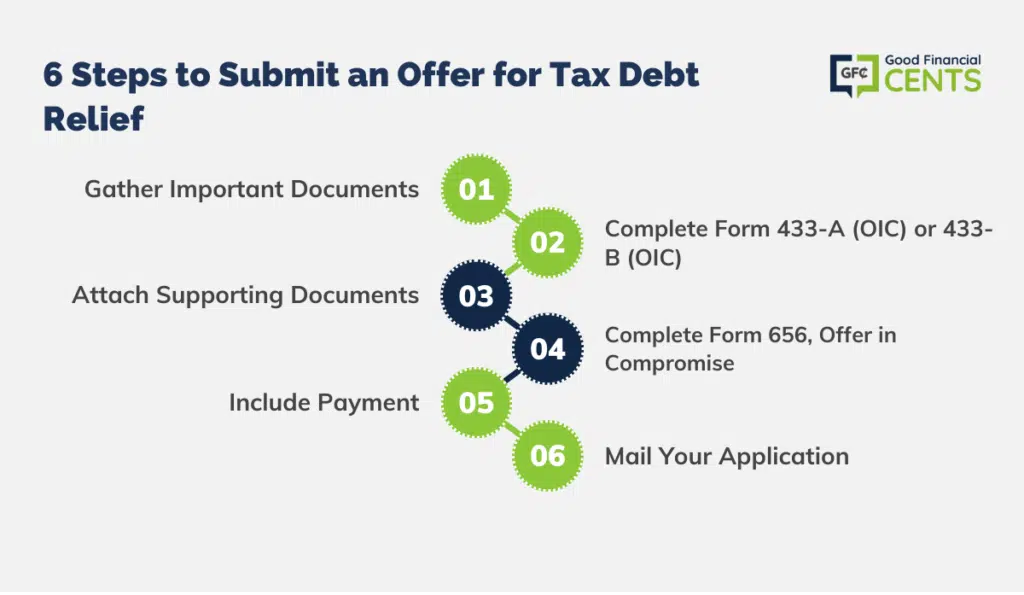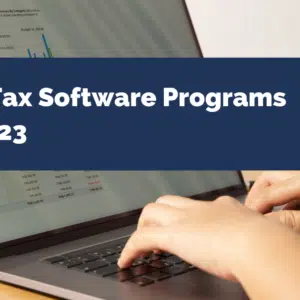Having trouble paying your tax bill? Falling behind on taxes can be scary, but you have options to get caught up. One common, albeit last-resort option, is an “Offer in Compromise”. In the 2022 fiscal year, the IRS accepted 13,165 offers in compromise to settle existing tax liabilities for less than the full amount owed, amounting to more than $234.3 million.
If you’re considering making an Offer in Compromise, you’ll need to know what it means and how to proceed. Here’s everything you need to know to determine if this strategy is right for you.
Table of Contents
What Is an Offer in Compromise?
An Offer in Compromise is an agreement you make with the IRS to settle your tax debt for less than the full amount. It’s used in cases where taxpayers would experience significant financial hardship if they paid the full tax amount that’s owed.
Qualifying for an Offer in Compromise isn’t easy. The IRS will assess not only your ability to pay the debt but also your income, expenses, and any equity you have in your assets. If it approves your offer, there are two different payment options (monthly or lump sum) available to help you customize your repayment schedule to your needs.
Offer in Compromise Eligibility
Here’s what the IRS looks for to determine eligibility for an Offer in Compromise:
- You can’t be in an open bankruptcy proceeding.
- You have to be caught up on filing all of your federal tax returns.
- You need to have made all of your required estimated tax payments.
- You’ve submitted all federal tax deposits for any employees.
Once you’ve met the basic criteria for eligibility, the IRS will review your offer. It typically approves offers where the amount you’ve suggested is more or less the maximum it could collect from you in what it determines to be a “reasonable” amount of time.
How to Submit an Offer in Compromise
Submitting an Offer in Compromise can be complicated so many people prefer to use a tax relief company to help. If you go that route, be sure to compare the best tax relief companies online before choosing one. Review each company to ensure it has a good track record, excellent customer service, and low tax relief service costs.
Although you can go through a tax relief company to submit an Offer in Compromise on your behalf, you can choose to submit your Offer in Compromise on your own which can save you money. Here are the basic steps to preparing an Offer in Compromise for the IRS.
Step 1: Gather Important Documents
You’ll need to provide personal details to complete your Offer in Compromise. First, make sure you have documents that show your total financial situation. You’ll want to have all aspects of your finances documented, such as cash, investments and assets, available credit, debt, and your income.
Also, if there are others in your household who contribute to expenses you’ll need to provide information about their income and average expenses.
Step 2: Complete Form 433-A (OIC) or 433-B (OIC)
Form 433-A (OIC) is for wage earners and those who are self-employed. This form helps the IRS calculate what it believes is an appropriate offer based on your income, expenses, and earning potential. Keep in mind, if you’re married, but living separately, your spouse will also have to file the same form.
Form 433-B (OIC) is necessary to fill out if you own a business or corporation, or you’re a single-member LLC, taxed as a corporation.
Step 3: Attach Supporting Documents
You’re not limited to only the information on the form, you can also attach additional documentation that shows your financial circumstances. Each form has a list of the specific documents you need to attach for support.
For example, with Form 433-A (OIC) some of the supporting documents you need to attach are copies of:
- Current pay stubs or earning statements;
- Individual bank statements from the last three months; and
- Statements for each investment or retirement account you have
Step 4: Complete Form 656, Offer in Compromise
In IRS Form 656, you’ll decide which tax years, and the type of tax, you’re going to offer a compromise for. You’ll also need to state the amount and how you’ll make payments.
Step 5: Include Payment
There are two separate payments you’ll need to make with your offer — the application fee, which is $205, and your initial payment.
Your initial payment depends on which repayment method you’re choosing. If you’re opting for monthly payments, then you’ll need to send the first month’s amount. If you’re opting for lump sum payments, you’ll need to send 20% of the total amount. If your offer is rejected, this initial payment will be applied to your tax debt.
You can send both payments by personal check, cashier’s check, or money order, or through the Electronic Federal Tax Payment System. You should make them payable to the “United States Treasury.”
There’s only one scenario when you don’t have to send any funds with your application — that’s if you qualify for Low-Income Certification. In this case, your application fee is waived and you don’t need to send your initial payment.
Step 6: Mail Your Application
Before you drop your application in the mail, be sure to make a copy of the entire package to keep for your records. It’s a good idea to send any sensitive documents, like an Offer in Compromise, via certified mail so that you can track the offer and retain proof of delivery.

What Happens When Your Offer Is Approved
If your Offer in Compromise is approved, you’ll have to continue to file taxes and keep up with estimated payments that are due in the future. An approved Offer in Compromise doesn’t give you any tax immunity on future earnings, it simply helps you resolve tax debt from past earnings.
After receiving written confirmation that your offer is approved, you’ll need to review the Offer Terms, which will be listed in Section 7 of Form 656. Then, you can start making payments.
If you opted for a lump-sum payment, you’ll have already submitted 20% of your total payment with your initial offer. After that offer is approved, you’ll need to pay the remaining balance in a maximum of five payments.
What to Do If Your Offer Is Denied
Not every Offer in Compromise is accepted by the IRS. If yours is denied, you still have options.
Here’s what to try next:
- You have 30 days to appeal your rejection, which you can do using Form 13711.
- Set up an installment agreement with the IRS that allows you to make monthly payments throughout a set term. This can stop any collection activity against you by the IRS.
- Apply for a payment extension using Form 1127.
- Request “Currently Not Collectible” status, which could temporarily defer your tax bill until your finances improve.
In addition to these strategies, you can also work to improve your finances to make it easier to repay your tax debt. If you don’t already have a budget, create one that includes debt payments.
Once you’ve cut expenses and directed those funds toward repaying your tax debt, consider also increasing your income to help you tackle your debt faster.
Even though paying your total tax bill might seem daunting, remember that it’s possible to fix financial problems — you won’t stay stuck forever. The key is determining the right plan for you and then staying consistent as you work toward your goals.








